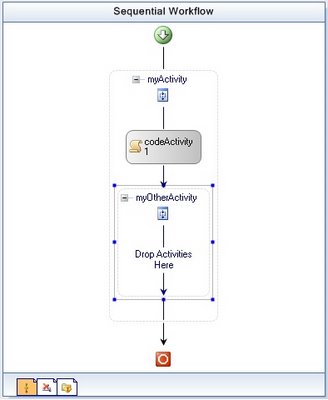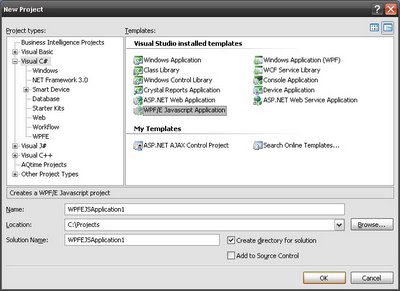The "why" question was recently asked within the
WPF Forum. It is an extremely valid and important question. I think it would be hard to adequately answer this question within a single blog post. However, when trying to explain "why" something is important, I try to stick to a "2-minute" rule. I pretend that I have two minutes to get my point across.
I really believe that WPF spans beyond just eye-candy (though it does let you make some pretty slick looking stuff) and provides value for all types of applications. This post is far from a complete answer to the "why" question, for more information, I would recommend this great
article . However, let's pretend I have two minutes to explain to an executive why I believe this platform should be used... (2 minutes begins now).
Productivity - WPF is a unified platform for UI development. Currently, two of the most used UI development infrastructures (ASP.NET and Windows Forms) provide two very different development experiences. If you need a browser-based application, one skillset is needed and if you need a Windows Forms application, another type of skillset is needed. With WPF, acquired UI development skills can be leveraged across varying application types.
Usability - It's been said that "a picture is worth a thousand words" and the built-in animation and media capabilities of WPF provide the opportunity for assisting both learning and experienced application users. Animations can be used to create illustrations that more effectively communicate items such as sales and marketing trends. In addition, the built-in support for a variety of audio and video types can be leveraged to easily distribute "how-to" videos within an application. This is a massive value add that can drastically improve an application's help documentation. If users are frustrated by an application, they are more likely to find an alternative.
Another one of the great features of WPF is the utilization of vector based graphics. Vector based graphics can address the needs of an aging audience that may have less than perfect eyesight, by providing the opportunity for fonts and certain images to scale in size.
Branding - WPF also helps in creating applications that really match the identity of an organization. Take a look at a corporate logo, generally it uses either a non-web friendly font, incorporates curves/rounded edges, and/or a gradient. While all of this stuff
can be done on Windows Forms and Web applications, they can be somewhat difficult to accomplish and often times require compromises. With WPF, shapes and gradients are part of the platform! In addition, by utilizing vector graphics, this branding is scalable.
In addition, WPF provides an excellent opportuntiy to get designers involved in the process by incorporating a model/view architecture. By incorporating designers, UIs can be more relevant, more engaging, and more distinct. (thanks goes to Rei Miyasaka for mentioning this in the comments).
Distribution - WPF also provides the opportunity to distribute an application to a wide variety of user end points. For instance, WPF can be used for desktop applications, intranet/internet applications and Windows Media Center applications.
(end 2 minutes).
After two minutes, only the surface has been scratched. However, before ending this post, I want to mention a facet of productivity that I feel is often overlooked, the availability of community. The .NET community is large and growing. Between the
user groups, the
forums, and the
blogs, I believe that the availability of assistance when needed is one thing that makes the this platform standout over others.
Another thing that I feel often gets overlooked is the fact that there is innovation within integration. Often times integration alleviates ambiguity. This alleviation is a massive value-add that is very hard to calculate. However, I feel that the WPF platform really hits on this concept of innovation through integration. There are other platforms that can do similar things. Some of these platforms can do certain things better. However, I believe if you take into account the entire picture, that is where I feel true value of WPF lies.
I look forward to the comments on this post!




